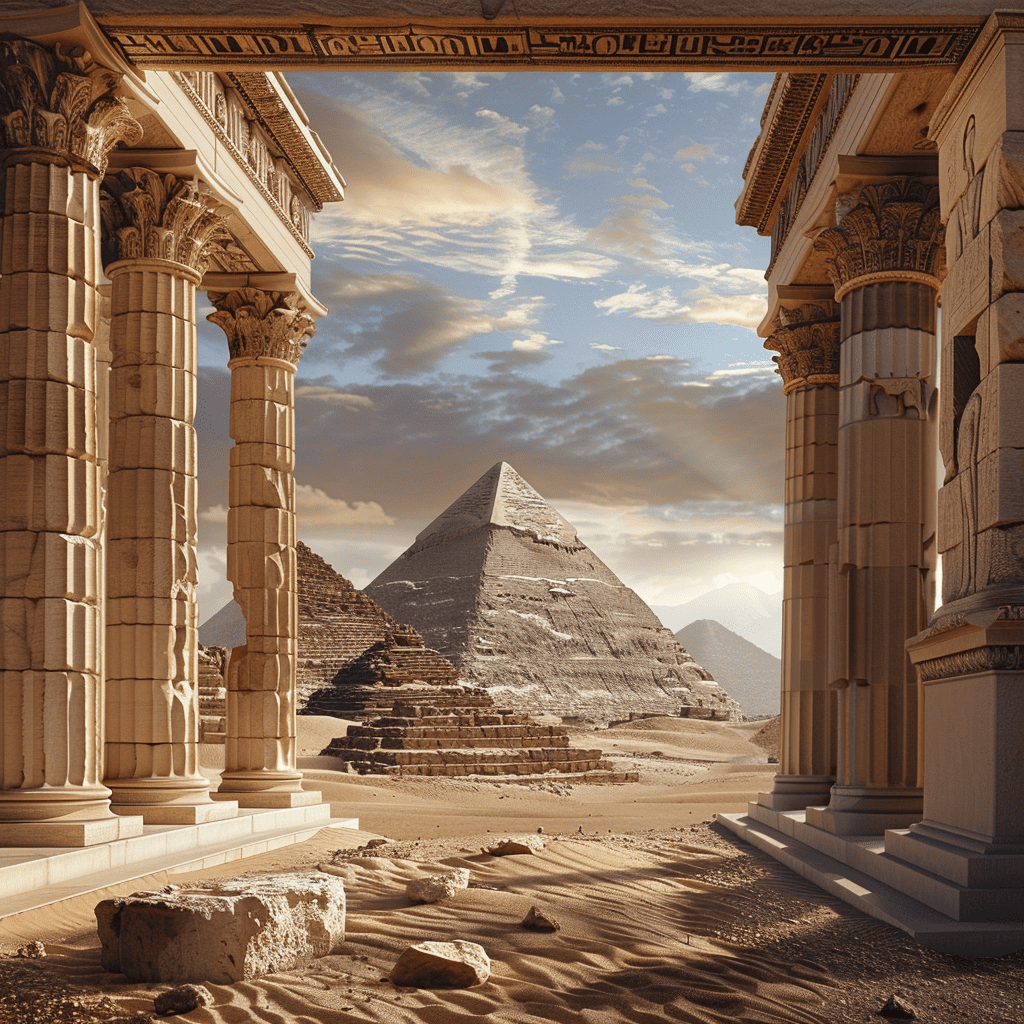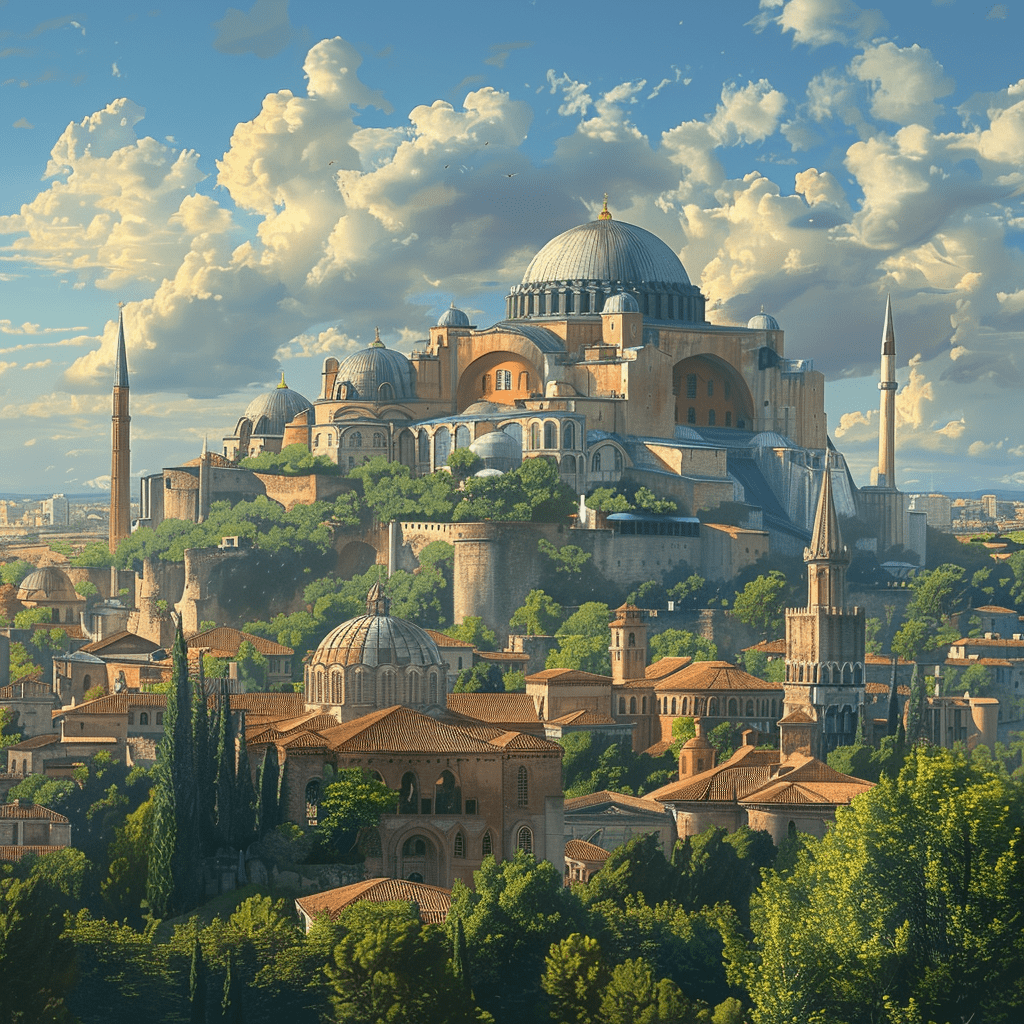Architecture is not only the science of designing and constructing buildings; it’s a narrative of human civilization’s technological, aesthetic, and cultural journey. This detailed exploration covers the evolution of architectural styles from the ancient monuments of Egypt to the sleek designs of the 21st century, illustrating how architecture has mirrored the societal values and technological advancements of each era.
Ancient Architectures: The Bedrock of Civilizational Identity

Egyptian Architecture (3100 BC to 30 BC): Egyptian architects were the trailblazers in using stone on a massive scale. The iconic pyramids, especially the Great Pyramid of Giza, stand as testaments to their engineering prowess. These structures were primarily tombs and temples, reflecting the Egyptian reverence for the afterlife and their powerful gods.
Greek Architecture (900 BC to 1st century BC): Greek architecture evolved through distinct phases from Doric to Ionic and finally to Corinthian styles, each marked by increasing complexity and ornamental features. The Parthenon, a temple dedicated to the goddess Athena, exemplifies the use of columns, friezes, and pediments that define classical architecture.
Roman Architecture (753 BC to 476 AD): Romans were inheritors of Greek architectural principles, which they adapted to build an empire. They introduced concrete as a building material, allowing them to construct the vast dome of the Pantheon and the sprawling aqueducts that symbolized Roman engineering skills. Their emphasis on public buildings like baths, amphitheaters, and temples showcased the role of architecture in public life.
Medieval Architectural Mastery: Symbolism and Scale

Byzantine Architecture (330 AD to 1453 AD): Following the decline of Rome, Byzantine architecture emerged with a new emphasis on verticality and mystical light. The Hagia Sophia, with its massive central dome and glittering mosaics, exemplified this blend of imperial grandeur and Christian iconography.
Romanesque Architecture (800 AD to 1200 AD): This style developed in Western Europe and was characterized by thick walls, small windows, and rounded arches, as seen in the robust design of the Durham Cathedral in England. Romanesque was a style built for stability, embodying a fortress-like approach to religious buildings.
Gothic Architecture (1100 AD to 1450 AD): Gothic architecture marked a high point in medieval building techniques, emphasizing light and height. The introduction of pointed arches, ribbed vaults, and flying buttresses, as seen in Notre-Dame de Paris, allowed for higher structures and larger windows, which were often filled with stained glass that narrated biblical stories.
Renaissance to Enlightenment: Rebirth and Rationality
Renaissance Architecture (14th to 17th century): The Renaissance marked a return to Classical principles of symmetry and proportion, driven by a rediscovery of ancient Greek and Roman texts. Architects like Filippo Brunelleschi and Andrea Palladio designed buildings such as St. Peter’s Basilica in Rome, which combined grand scale with classical harmony.
Baroque Architecture (1600 AD to 1750 AD): Baroque architecture was characterized by dynamic complexity and grandiose visions, often used by the Catholic Church to convey its power. The grandeur of St. Peter’s Square in Vatican City exemplifies Baroque’s lavish aesthetics and its capacity to manipulate emotions through architecture.
Modern and Contemporary: Functionality and Beyond

Modern Architecture (late 19th to mid-20th century): Modern architecture broke with the past to embrace minimalism and industrial materials. Pioneers like Walter Gropius and Le Corbusier focused on function, creating designs like the Villa Savoye, which emphasized open spaces and the use of concrete and steel.
Postmodern and Contemporary Architecture (1970s to present): In reaction to modernism’s strict minimalism, postmodern architecture reintroduced ornament and color. Architects like Frank Gehry and Zaha Hadid have pushed the boundaries of architectural form, creating fluid, dynamic structures such as the Guggenheim Museum Bilbao and the London Aquatics Centre.
Conclusion: The Legacy of Historical Styles in Modern Design
The historical evolution of architectural styles offers a window into the changing priorities and technologies of societies across millennia. Today’s architects draw on a rich heritage of styles, blending lessons from the past with cutting-edge technology and materials to shape the buildings of the future. This ongoing dialogue between old and new continues to enrich our landscapes and cities.







